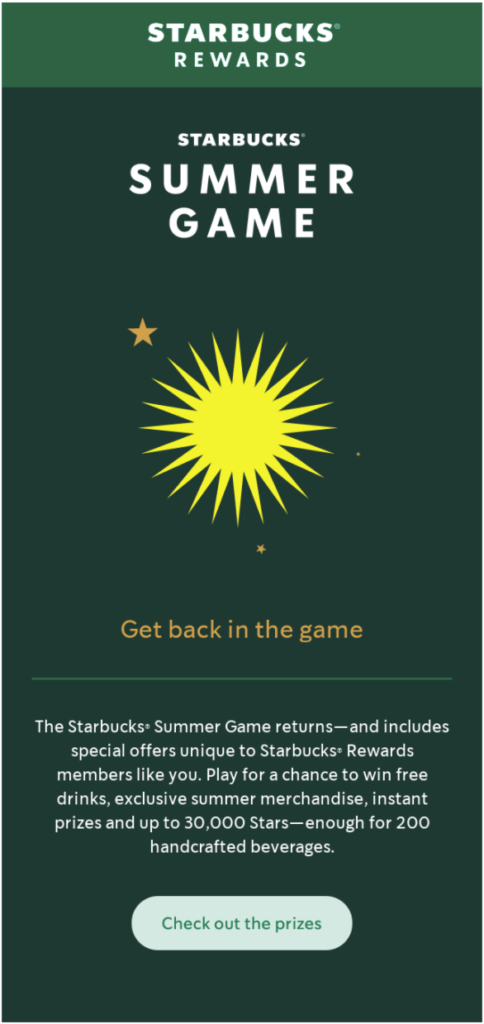Historically, when the weather heats up, online sales cool down as shoppers spend more traveling, dining out, and generally enjoying the great outdoors.
All of which means that if you’re going to drive sales during the summer months, you can’t afford to sit back and wait for shoppers to come to you.
Instead, your marketing needs to pick up the slack by reaching new audiences, nurturing existing customers, and promoting attractive offers.
With that in mind, we’ve rounded up 17 of our favorite summer marketing ideas, segmented by month and backed up by examples from real-world brands and retailers.
Use them to inspire your own summer campaign planning…
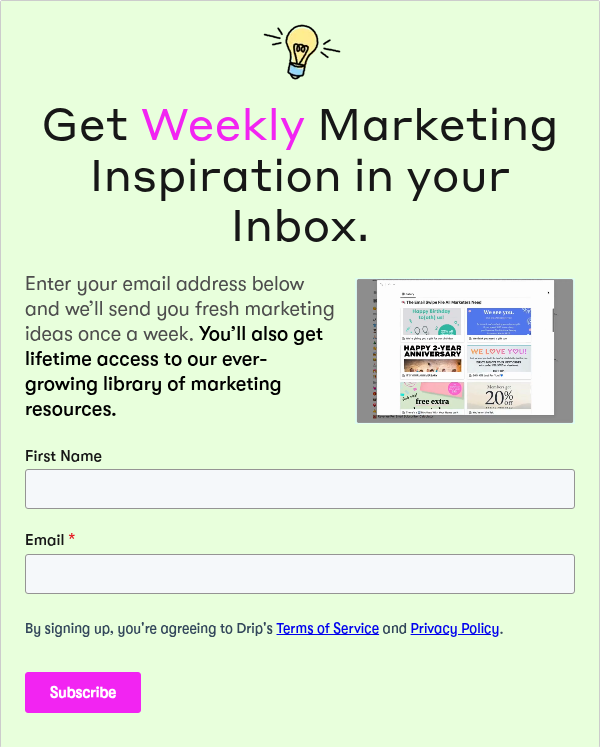
7 Excellent Summer Marketing Ideas
1. Tap Into Awareness Days & Causes
If you’re ever short of marketing ideas, awareness days and causes can be the perfect inspiration. They allow you to piggyback on a wider conversation, helping you generate some much-needed brand awareness.
Fortunately, there’s never any shortage of “national days,” which translate into perfect ecommerce holidays. Some are focused on campaigns for social good, whereas others are pretty frivolous or entirely ridiculous. In summer alone, you’ve got:
- World Oceans Day (8th June)
- World Refugee Day (20th June)
- International Joke Day (1st July)
- National Ice Cream Day (third Sunday in July)
- National Lasagna Day (29th July)
- Friendship Day (5th August)
- World Elephant Day (12th August)
And those are just for starters—honestly, there are hundreds of these things. Obviously, not all will be relevant to your brand.
What’s more, some likely don’t justify any more than a throwaway social post, while others are big events deserving of a whole campaign.
You (probably) don’t need to devote a whole month of marketing activity to National Lasagna Day, whereas if you’re going to join the conversation around a weighty subject like World Refugee Day, you really need to justify your involvement.
Otherwise you’ll come across as crass and opportunistic.
For an example of how to get it right, take a look at how Durex teamed up with Swedish pop star Zara Larsson to promote safe sex in the run-up to World Aids Day:
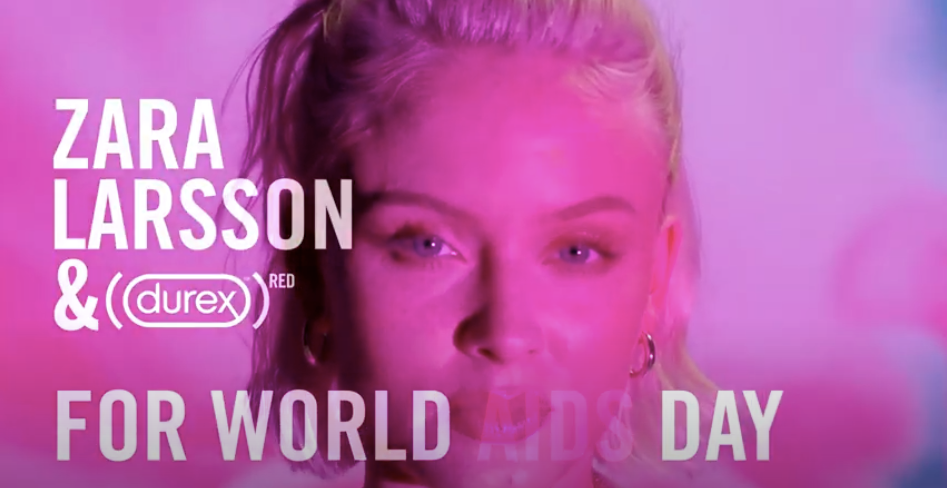 That’s a strong campaign because it’s directly relevant to Durex, and also because Larsson has a track record of speaking out on issues related to sexual health. It feels authentic.
That’s a strong campaign because it’s directly relevant to Durex, and also because Larsson has a track record of speaking out on issues related to sexual health. It feels authentic.
2. Launch (& Promote) a Summer Sale
There’s an obvious way to encourage sales during quieter times of the year—launch a sale.
In key markets across Europe and North America, it’s traditional to run some sort of sales promotion during the summer months. Here in Denmark, sales often run from the start of June until the end of August, but those periods vary from one country to another. In France, for instance, sales periods can only run for a maximum of four weeks, with the specific dates dictated by individual départements.
Once you’ve figured out the logistics of when to run your sale (based on rules and consumer preferences in the markets you serve), it’s time to spread the word.
Email marketing is one of the best ways to do this. With an ROI of 42:1, it can generate a staggeringly high bang for your marketing buck if you get it right.
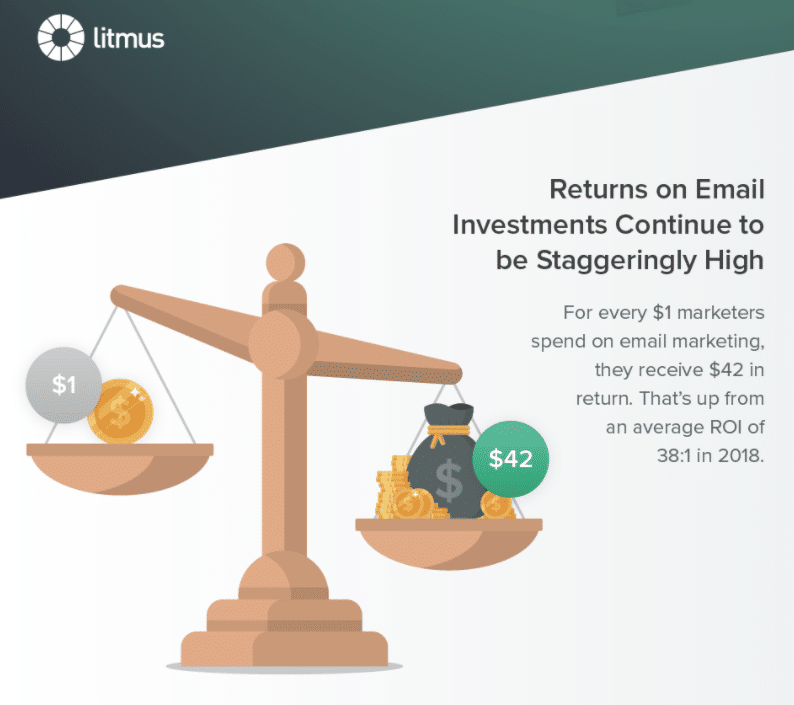 Even brands that don’t typically offer discounts have been known to run summer sales (and promote them through email). Everlane is a good example:
Even brands that don’t typically offer discounts have been known to run summer sales (and promote them through email). Everlane is a good example:
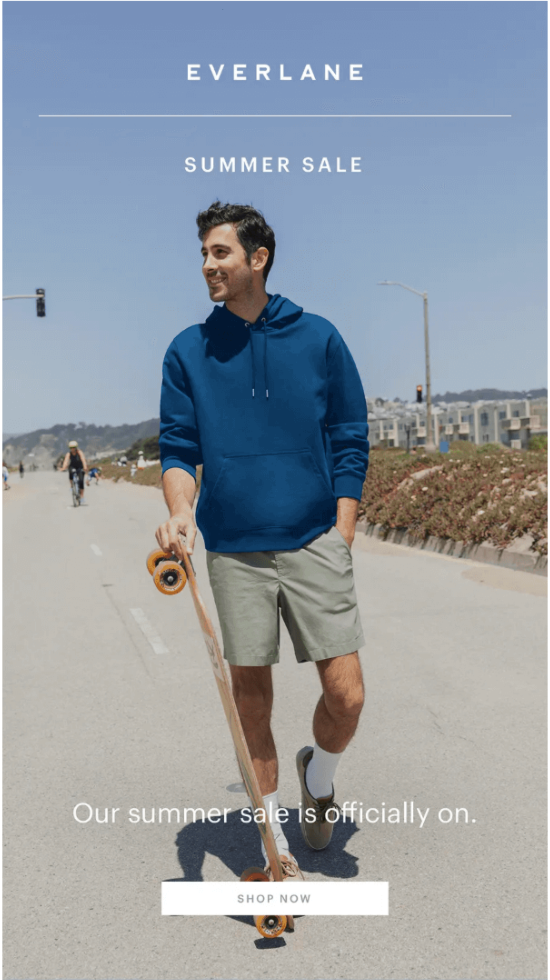 (Source: Really Good Emails.)
(Source: Really Good Emails.)
The US clothing retailer launched its first ever summer sale in 2020, promoting the event via an email campaign that highlighted how this wasn’t simply an everyday occurrence:
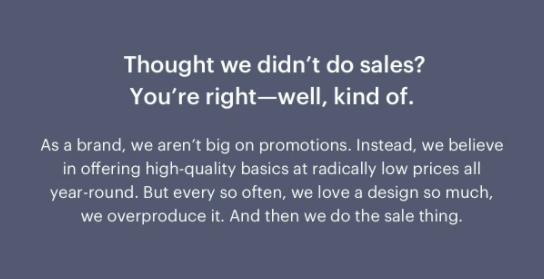 That gave the campaign some real scarcity value, which is always a great way to persuade consumers to take advantage.
That gave the campaign some real scarcity value, which is always a great way to persuade consumers to take advantage.
3. Run a Summer Social Media Competition
Starved of attention while your customers bask in the summer sunshine? Coax them back, while building awareness among new audiences, by running a social media contest.
Importantly, competitions aren’t just an effective way to drum up some extra traffic and sales at a quiet time of year. They’re also a fantastic source of user-generated content, which is an absolute godsend for brands. Indeed, four-fifths of consumers say UGC highly influences their purchasing decisions, while just one in eight say the same about content created by brands themselves.
Summer photo contests can be an especially good fit for retailers selling seasonal products.
Outdoor brand Marmot gives us a great example of this in action. This summer, it’s promoting The Elevation Grant, a photography competition targeting BIPOC creatives:
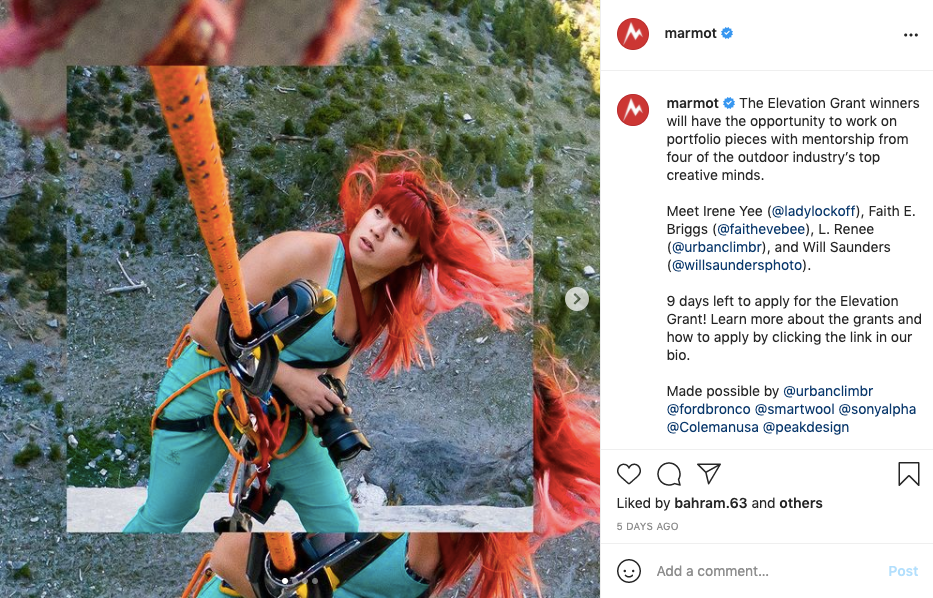
Let’s take a second to look at all the wins this offers Marmot:
- It generates a bunch of UGC, which, as I’ve already mentioned, plays a big part in influencing buying decisions.
- It’s latched onto a social issue that’s relevant to its industry, namely the lack of BIPOC representation in outdoor photography.
- Its products are directly relevant to the conversation, which means the campaign doesn’t feel forced, insincere, or inauthentic.
4. Offer Seasonal Freebies
There’s no time of year when people don’t love “free stuff,” which means a seasonal giveaway is always a viable tactic.
But they can be particularly effective in summer (provided your products are the right fit). Why? Because people are out and about anyway, so there’s a good chance they’ll be taking lots of pictures. This, in turn, means it’s a great time to give them free stuff they can show off for you—and you should never forget the value of user-generated content.
Giveaways aren’t just an effective summer marketing idea for small brands keen to get eyes on their products; plenty of big names do it, too.
For instance, Starbucks regularly runs a summer game offering its rewards members the chance to win seasonal merchandize, free drinks, and a host of other prizes:
Make those prizes particularly eye-catching or unique (or ideally both), and there’s a good chance people will share them on social media too, which helps generate plenty of brand awareness.
5. Update Your Visuals for Summer
Every season has its own look and feel.
That’s the reason northern hemisphere Christmas adverts are all about snow and roaring fires, rather than sun-kissed beaches and palm trees.
Clearly, summer is no different. So if you’re going to get shoppers in the buying mood throughout the hottest months of the year, your branding needs to resonate with how they’re feeling.
With that in mind, a lot of brands update their social platforms and key landing pages to reflect the season. For example, take a look at how fashion ecommerce store Pretty Little Thing gave its homepage a distinctly summery facelift:
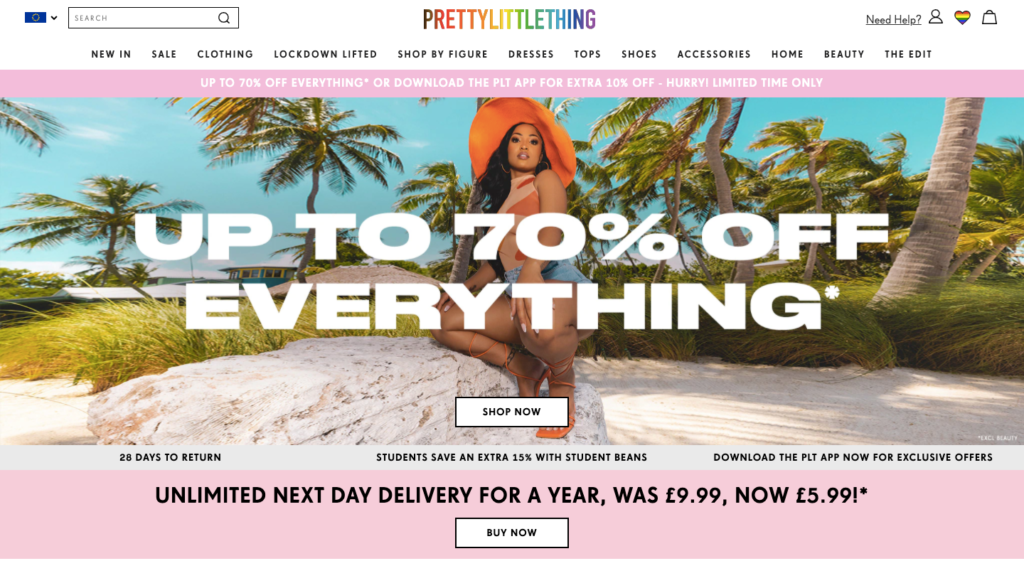 But updating your visuals for summer is only relevant to apparel retailers. Whatever industry you’re in and whoever your audience is, there are benefits to giving your site a seasonal facelift.
But updating your visuals for summer is only relevant to apparel retailers. Whatever industry you’re in and whoever your audience is, there are benefits to giving your site a seasonal facelift.
Traditionally, computer games are pretty much the antithesis of enjoying the summer. After all, if you’re playing a console game, you’re almost certainly doing it inside, not in your sun-drenched garden. Yet UK-based videogame retailer GAME still decided to update its website for summer with a simple banner image at the top of the homepage:
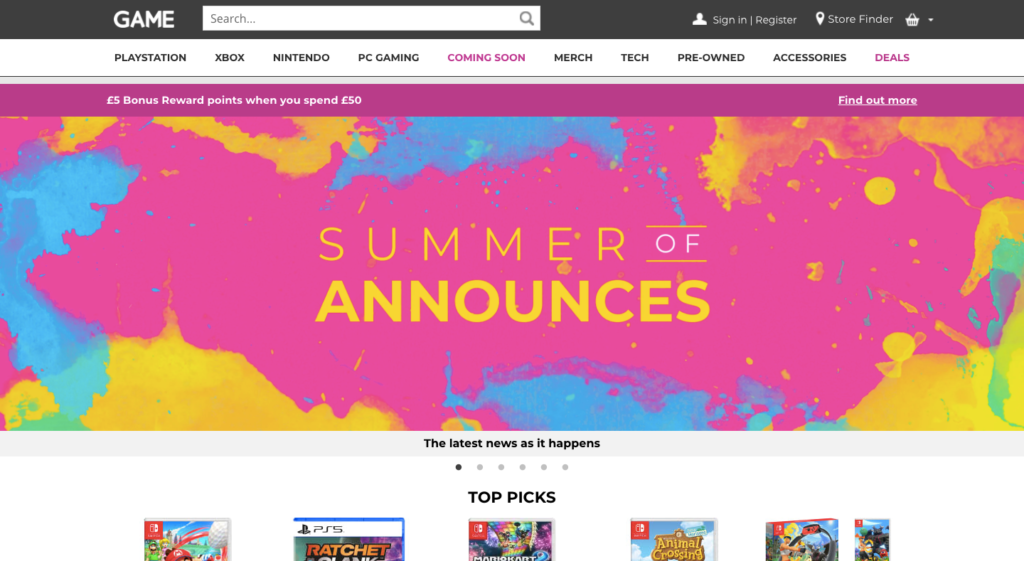 Both these examples demonstrate that there’s no need to do an entire rebrand to make your website (and social channels) summer-ready. A change of background, or a few well-placed summery images, can do all the hard work for you.
Both these examples demonstrate that there’s no need to do an entire rebrand to make your website (and social channels) summer-ready. A change of background, or a few well-placed summery images, can do all the hard work for you.
6. Use Summer Emojis in Your Email Marketing
Think “summer” and any number of images spring to mind—ice cream; the sun; the beach.
Fortunately for us marketers, a lot of those images have their own corresponding emojis, so why not use them in your email marketing?
Now, emojis aren’t for everyone—if you’re running a law firm or you build tombstones, they’re probably not a great fit for your brand.
But they can definitely work super well for some businesses. In fact, one study claimed brands that use emojis in their email marketing see a 56 percent increase in unique open rates.
In short, it appears that emojis can help your emails stand out in your customers’ increasingly cluttered email inboxes.
Clearly, a lot of brands have already realized the summer marketing potential of emojis. Here’s a snapshot of three recent emails I’ve received that have made smart use of emojis in the subject lines:
![]()
![]()
![]()
Still not sold on emojis? Try a little A/B testing. Take a subset of your customers, split it in two, then target one group with a standard email and the other with exactly the same email, but with a subject line containing an emoji or two.
If the emoji version has a higher click-through rate, chances are your audience liked it, so give them more of what they want.
7. Speak to Consumer Desire to Get Active
When they’re not having a barbecue or picnic in summer, Americans are most likely to spend their outdoor time going for a walk or hike, according to the National Recreation and Park Association.
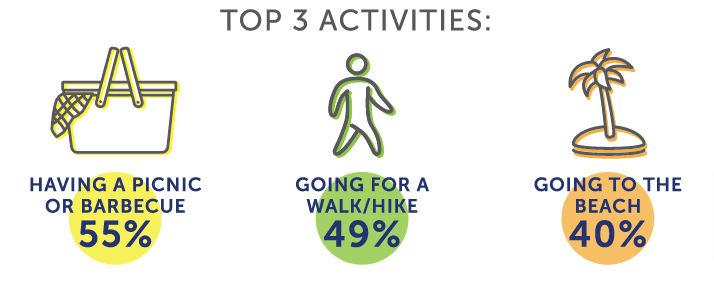 So there’s a clear opportunity throughout the summer months for any even remotely outdoorsy brand.
So there’s a clear opportunity throughout the summer months for any even remotely outdoorsy brand.
UNIQLO is a good example of such a brand. In this email newsletter, the fashion giant picked out some of its top seasonal products:
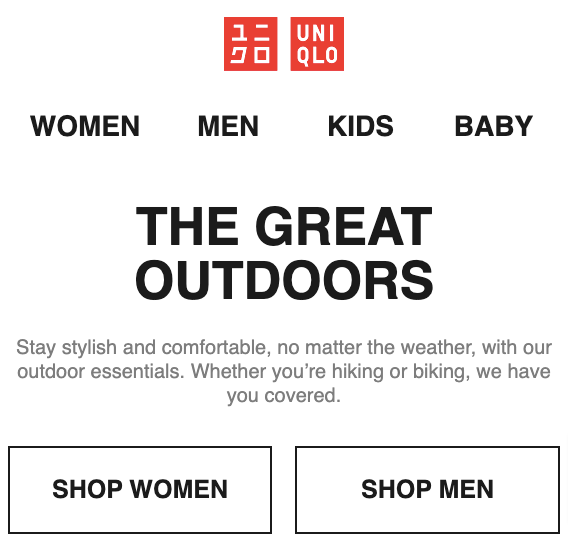 This email works well because it speaks to a common consumer pain point during the hottest months of the year: the desire to feel comfortable while looking stylish.
This email works well because it speaks to a common consumer pain point during the hottest months of the year: the desire to feel comfortable while looking stylish.
3 June Marketing Ideas to Inspire Your Campaigns
1. Celebrate Your Commitment to LGBTQIA+ Issues
June is Pride Month.
To be clear, that doesn’t mean it’s the only month when you should show your support for the LGBTQIA+ community. In reality, two-thirds of Americans think brands should speak out on LGBTQIA+ issues throughout the year.
Still, it’s perfectly logical—and acceptable—to make Pride Month the focal point of your year-round LGBTQIA+ campaigning efforts.
But what should those efforts look like?
While there’s no approach that’ll work for every brand, as a general rule, your Pride Month promotions certainly shouldn’t be overly commercial.
(In other words: forget about using June to shift a few rainbow T-shirts and tote bags.)
Instead, try speaking out about what you’ve done to help the LGBTQIA+ community, just like custom picture frame brand Framebridge did in this Pride email:
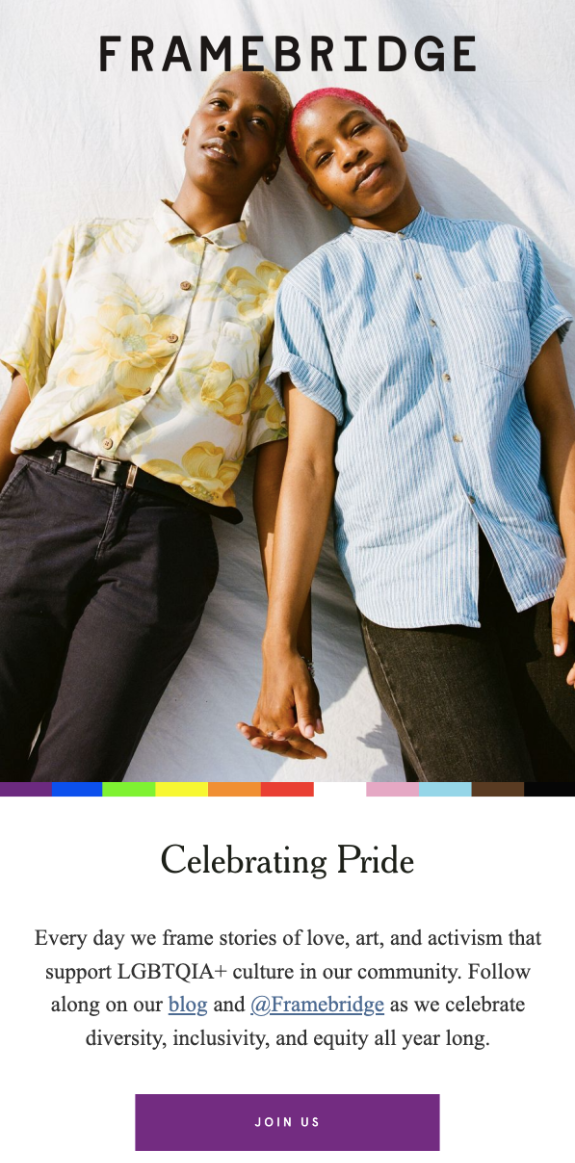 As you can see, this newsletter is 100 percent focused on celebrating Pride and highlighting Framebridge’s part in the broader conversation.
As you can see, this newsletter is 100 percent focused on celebrating Pride and highlighting Framebridge’s part in the broader conversation.
The brand also scores points here for demonstrating its support for diversity, inclusivity, and equity all through the year.
2. Support a Good Cause for Juneteenth
You probably know that, as of 2021, Juneteenth (June 19) is America’s newest federal holiday.
Unsurprisingly, awareness of the date has grown significantly since it was officially awarded holiday status, with a 2022 Gallup survey revealing that 59 percent of people knew “a lot” or “something” about Juneteenth (up from just 37 percent a year earlier).
Juneteenth can be tricky for brands and marketers.
Chances are you want to recognize the occasion. But you don’t want to offer empty words. And you definitely don’t want to look cynical, or like you’re using the holiday to drive sales.
Mavi Jeans navigated those choppy waters successfully with this campaign, which highlighted the denim brand’s support for a good (and relevant) cause:
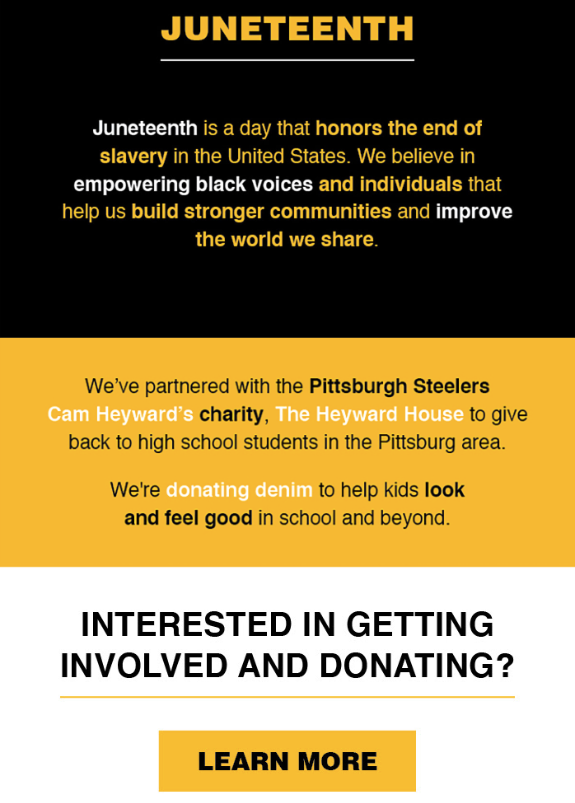 Like Framebridge’s Pride Month email, this newsletter doesn’t try to sell us anything—it’s solely designed to promote Mavi Jeans’ charity partner, The Heyward House.
Like Framebridge’s Pride Month email, this newsletter doesn’t try to sell us anything—it’s solely designed to promote Mavi Jeans’ charity partner, The Heyward House.
Despite this, Mavi still manages to reference its products in a way that feels natural. This is a key point, given that three-fifths of consumers feel brands should only support good causes that actually relate to their business.
3. Target Father’s Day Shoppers
National Retail Federation (NRF) research shows that three-quarters of Americans plan to celebrate Father’s Day (June 18), with the average person set to spend almost $200 on gifts.
While greeting cards are the top purchase, there are opportunities across multiple categories. Over half buy clothing-related gifts, a similar proportion splurge on special outings, and one-third choose personal care items.
And with 43 percent of consumers purchasing Father’s Day presents online (more than any other channel), the occasion is undeniably a big deal for ecommerce brands and retailers.
Just like with other key celebratory dates—think Valentine’s Day and Mother’s Day—one of the best ways to boost Father’s Day sales is to remind your audience when the big day is approaching.
That’s just what sock and apparel brand Bombas did in this newsletter:
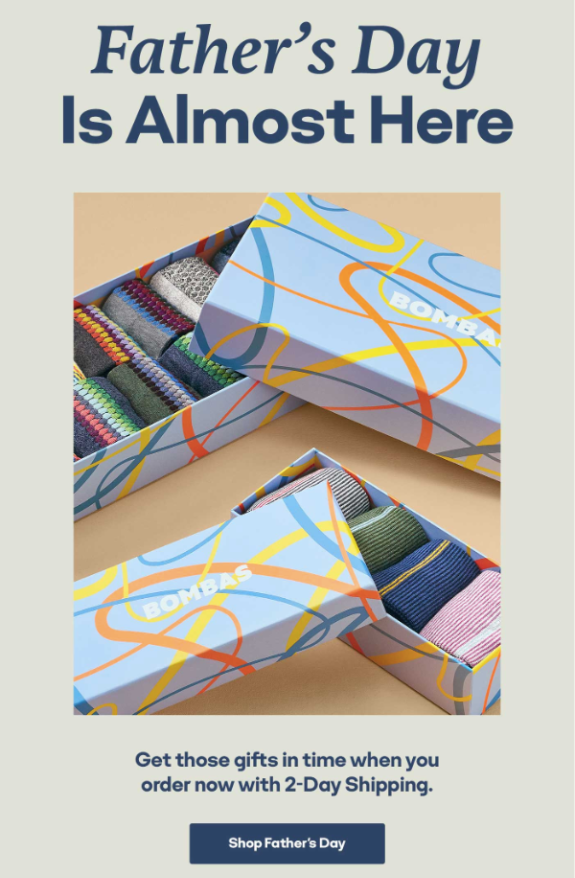 With one in three Americans admitting they “sometimes”, “always”, or “frequently” send Father’s Day gifts late, there’s a good chance your customers will appreciate the reminder.
With one in three Americans admitting they “sometimes”, “always”, or “frequently” send Father’s Day gifts late, there’s a good chance your customers will appreciate the reminder.
Even better, this tactic naturally adds a sense of urgency to your messaging, prompting shoppers to act quickly or risk missing the shipping deadline.
Want more inspiration? Check out our roundup of June newsletter ideas!
2 July Marketing Ideas to Jog Those Creative Juices
1. Share (Relevant) 4th of July Messaging
From a US perspective, Independence Day is really the only show in town once July rolls around.
According to the NRF, 87 percent of Americans plan to celebrate the holiday, splashing out over $90 on food purchases in the process. What’s more, one-third intend to buy “patriotic items” like flags, decorations, and apparel.
Like any major holiday, you don’t want to say nothing on the 4th of July. At the very least, you should probably share a cheery “Happy Independence Day” with your (American) customers.
But if you’re in the right niche, there’s a real opportunity here to drive sales and revenue.
Take Green Chef, for example. It’s a meal kit delivery service—and given that food is far and away the most popular Independence Day purchase, the Fourth is likely one of the biggest dates on its marketing calendar.
Take a look at how the brand used the holiday to promote subscriptions:
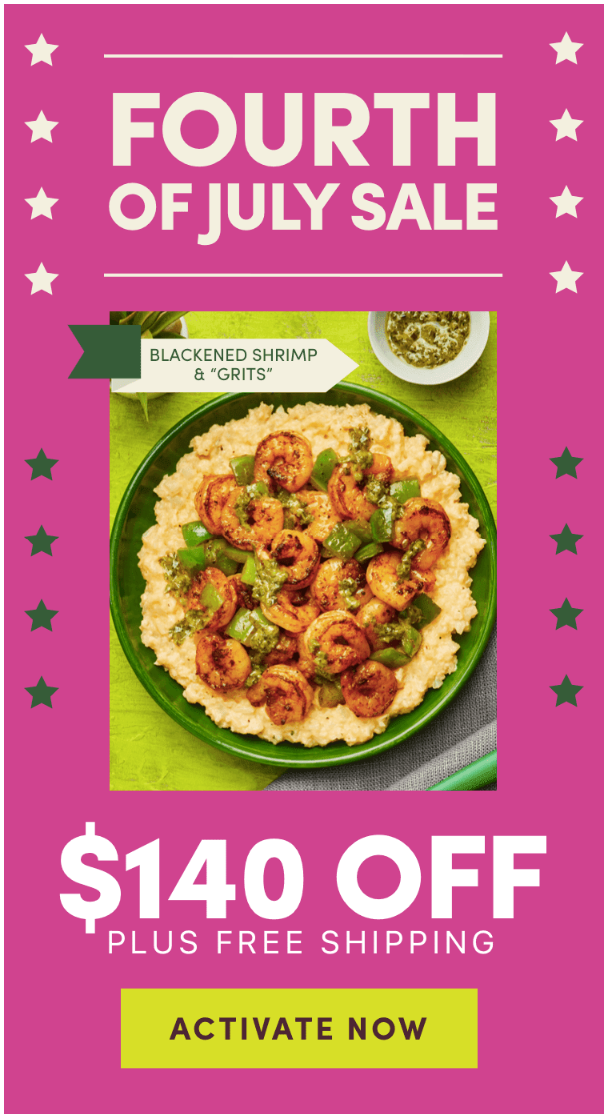 Not only is this a highly relevant offer, but the substantial cash savings make it sound like a sufficiently big deal to share on “America’s birthday”.
Not only is this a highly relevant offer, but the substantial cash savings make it sound like a sufficiently big deal to share on “America’s birthday”.
2. Celebrate BBQ Season
If you’re anything like me, you don’t need much excuse to throw a barbecue.
But there’s no denying July is prime BBQ season, not least because it’s comfortably the most popular way to celebrate Independence Day.
 So if you’re struggling for summer marketing ideas, July is the ideal time to promote something—anything—that speaks to our love of outdoor grilling.
So if you’re struggling for summer marketing ideas, July is the ideal time to promote something—anything—that speaks to our love of outdoor grilling.
Which is exactly what Team Man Crates did with this email (just don’t look too closely at the food):
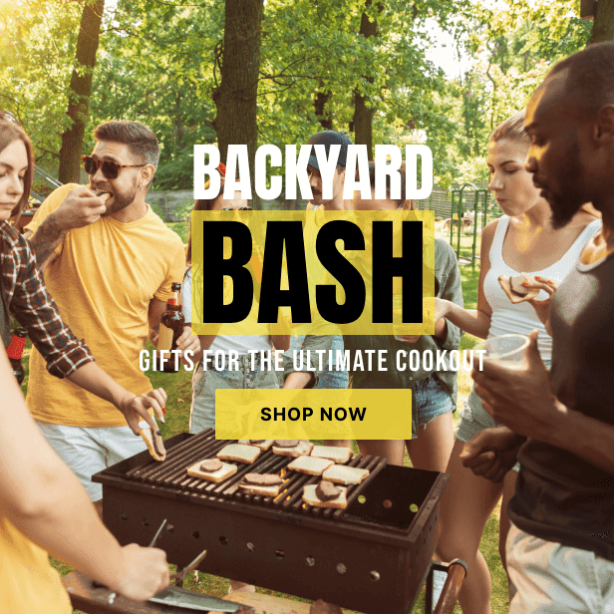 The best thing is, you don’t have to sell cooking equipment—or anything food-related—to ride the barbecue bandwagon.
The best thing is, you don’t have to sell cooking equipment—or anything food-related—to ride the barbecue bandwagon.
Apparel; accessories; sunglasses; outdoor furniture; all those categories (and more) can be easily squeezed into a BBQ-themed campaign.
Explore more July newsletter examples.
3 August Marketing Ideas to Bring Heat Back to Your Campaigns
1. Capitalize on Back-to-School Shopping
While they’re not particularly summery events, back to school and back to college are two of the season’s biggest shopping events.
Combined, the two represent an astonishing $135 billion of consumer spending, with back-to-school families splashing out $890 on average—rising to $1,367 for college students and their families.
And with top spending categories including apparel, electronics, and apartment furnishings, the back-to-school (and college) season offers huge opportunities for a wide range of brands.
Skincare brand Origins got in on the act by promoting a discount for students and teachers, accompanied by this enticing subject line:
![]() Within the email body, Origins clarifies that this discount doesn’t only apply to the back-to-school period; it’s available all year round.
Within the email body, Origins clarifies that this discount doesn’t only apply to the back-to-school period; it’s available all year round.
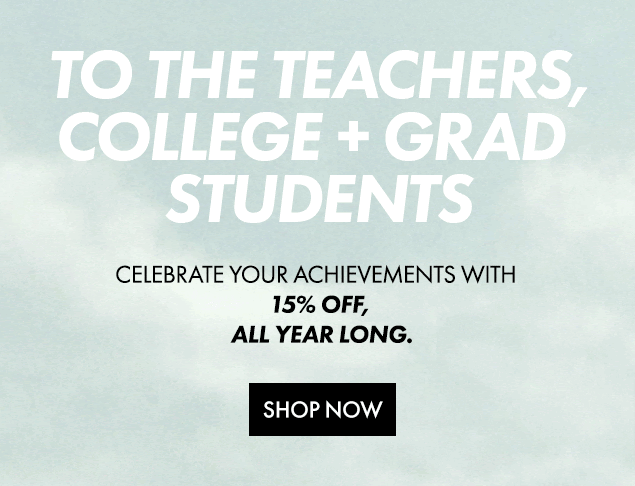 This is a smart play, helping to draw in teachers and students when they’re most likely to be shopping for supplies, while also encouraging them to return throughout the year.
This is a smart play, helping to draw in teachers and students when they’re most likely to be shopping for supplies, while also encouraging them to return throughout the year.
And while offering a permanent 15 percent student-and-teacher discount might seem unnecessarily generous, it likely helps Origins build longer-term customer relationships—with 93 percent of shoppers saying they’d make repeat purchases from retailers offering attractive discounts.
2. Clear Out Summer Stock
By the time August rolls around, retailers face the real possibility of being stuck with a bunch of unsellable seasonal stock.
That’s a big concern, with overstocks costing the average brand 3.2 percent of revenue—equating to a combined annual loss of $123 billion for all North American retailers.
While you can’t totally avoid the risk of overstocks, you can take steps to mitigate it by offering an attractive discount on older seasonal stock, just like Sunski did in this email:
 Alternatively, if your old stock is a little less seasonal than sunglasses, you might be able to clear out your warehouse with no more than some intelligent copywriting.
Alternatively, if your old stock is a little less seasonal than sunglasses, you might be able to clear out your warehouse with no more than some intelligent copywriting.
Brooklinen used this approach to drive sales of its older bedding products:
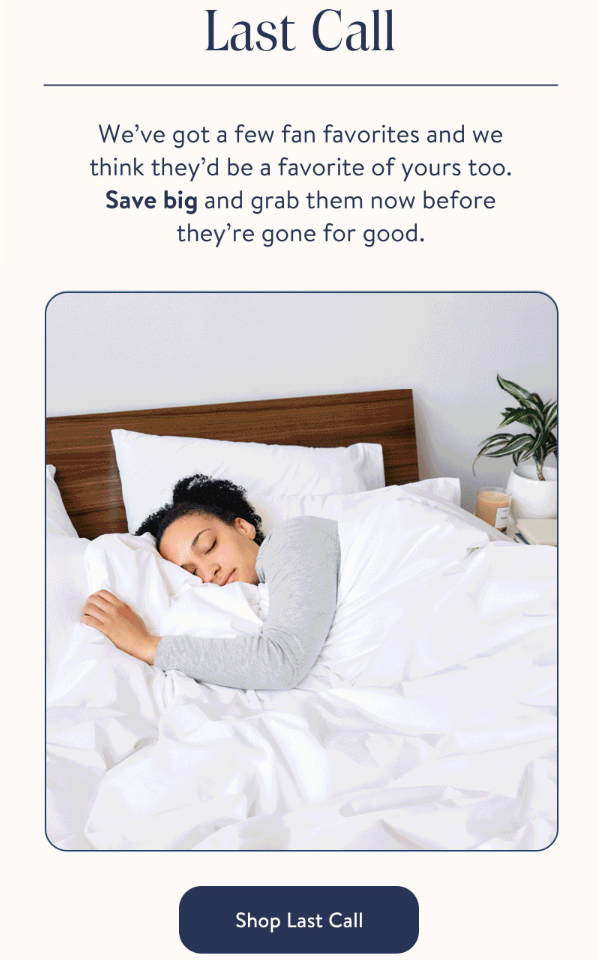 Rather than offering an aggressive discount, Brooklinen simply positioned these products as “fan favorites” that would only be available for a short time.
Rather than offering an aggressive discount, Brooklinen simply positioned these products as “fan favorites” that would only be available for a short time.
Not only does this make the selected products feel more desirable, but it also compels shoppers to take action through urgency and scarcity-infused messaging.
3. Provide Summer/Fall Product Recommendations
It might sound counterintuitive, but one of the smartest summer marketing ideas is to start promoting fall-friendly products.
Especially if you’re in a highly seasonal niche with fast-moving trends.
Fashion is a prime example, with brands often using August to recommend products that are relevant to both summer and fall.
That’s precisely what Abercrombie & Fitch did with this email subject line:
![]() The whole idea of “inter-seasonality” continued within the email body, in which Abercrombie & Fitch highlighted some of its top “year-round favorites”.
The whole idea of “inter-seasonality” continued within the email body, in which Abercrombie & Fitch highlighted some of its top “year-round favorites”.
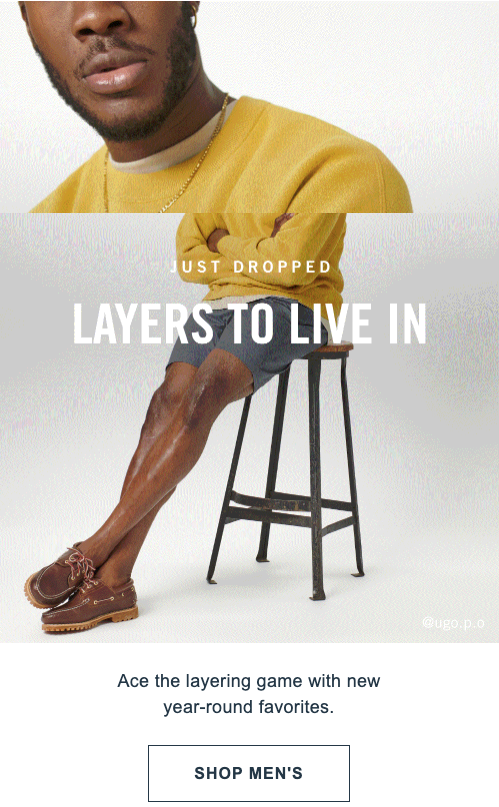 This strategy works well because it helps the brand’s audience feel ahead of the curve—like they’re getting an early glimpse at next season’s products.
This strategy works well because it helps the brand’s audience feel ahead of the curve—like they’re getting an early glimpse at next season’s products.
Looking for more August newsletter ideas? We’ve got you!
2 Early September Marketing Ideas
1. Promote a Labor Day Sale
Another of America’s federal holidays, Labor Day (the first Monday in September) was originally conceived to honor the American labor movement—but today it’s more about barbecues, parades, and shopping.
A Numerator survey conducted ahead of Labor Day 2022 revealed three-quarters of consumers planned to celebrate the holiday, with 94 percent of them planning to make purchases for the occasion—the majority of which are food-focused.
However, Labor Day also offers opportunities for non-foodie brands, with one-third of consumers saying they planned to shop deals over the long weekend and half saying they might participate. Top shopping categories included apparel/shoes and household essentials.
With so many shoppers actively hunting for bargains, you might want to consider launching a Labor Day sale, just like this example from vintage furniture retailer Chairish:
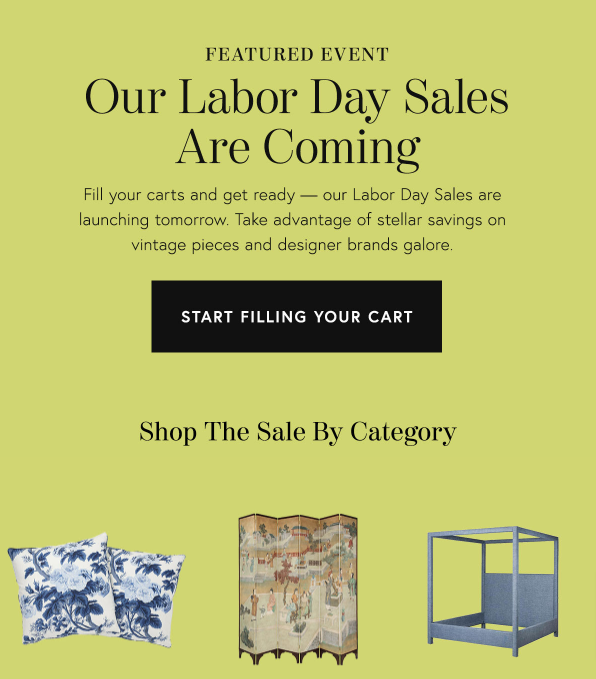 Of course, if you do go down the limited-time discount route, it makes sense to tease your sale a week or two in advance—so don’t leave it all until September.
Of course, if you do go down the limited-time discount route, it makes sense to tease your sale a week or two in advance—so don’t leave it all until September.
2. Push Fall Products
I’ve already pointed out that once August arrives, it’s smart for brands selling seasonal products to start gently promoting their fall collections.
Well, September is definitely the time to ramp up your fall-focused marketing by:
- Adding fall-friendly messaging and visuals to your website, social posts, and newsletters
- Promoting fall-specific products and collections
To take just one example from the world of fashion, searches for trench coats start to climb in early September, before peaking in late November:
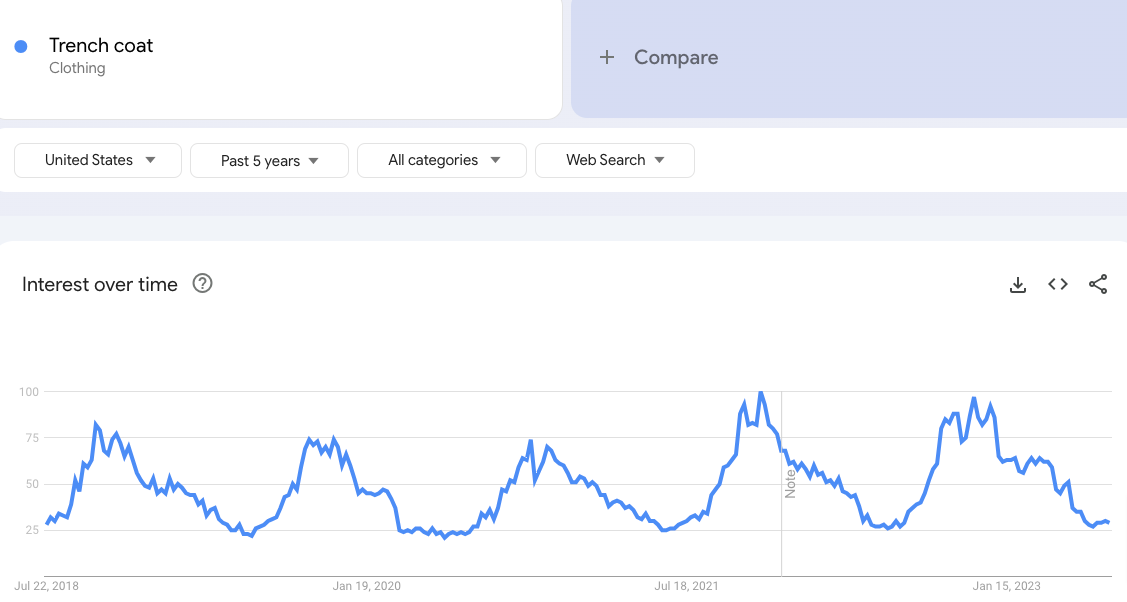 Banana Republic knows timing is everything in the world of ecommerce marketing, so it created this September newsletter to showcase the latest in trench coat technology:
Banana Republic knows timing is everything in the world of ecommerce marketing, so it created this September newsletter to showcase the latest in trench coat technology:
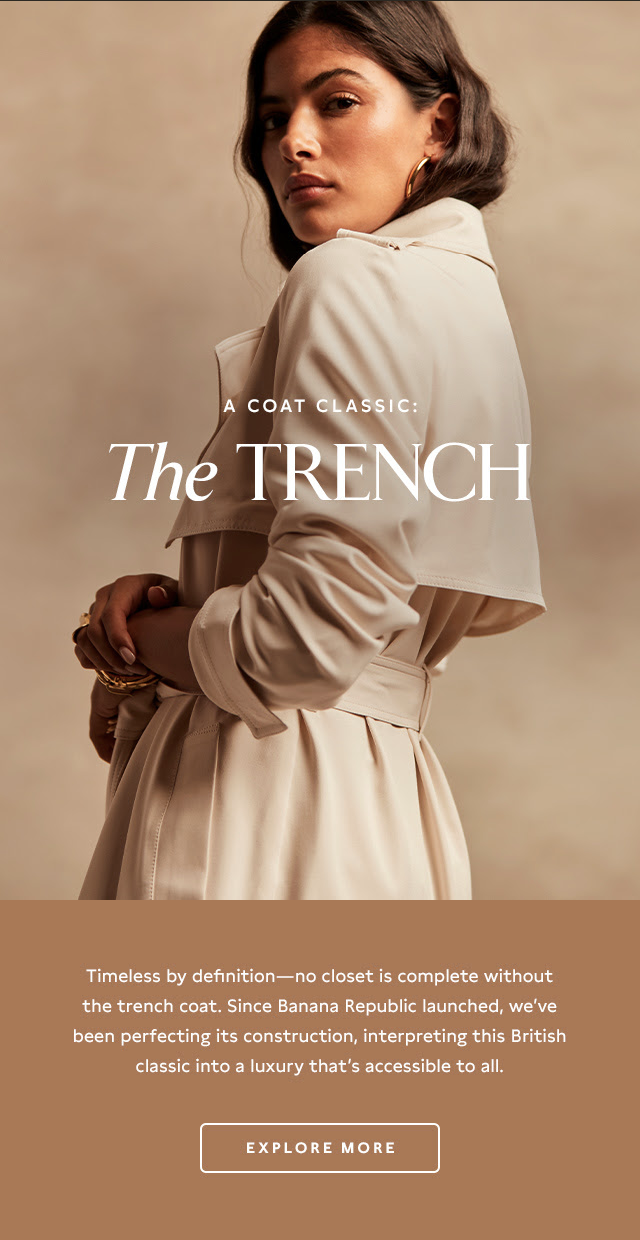 But timing isn’t the only thing Banana Republic got right here.
But timing isn’t the only thing Banana Republic got right here.
The copywriting is excellent, too, with its focus on explaining how the brand has re-imagined the classic trench. This teams well with the “Explore Now” CTA, which feels more engaging than the regulation “Shop Now”.
Check out more of our favorite September newsletter ideas!

Conclusion
Sure, marketing in summer presents a few key challenges. Especially at the moment, when pretty much the whole world is still waiting for normality to resume after the pandemic.
But those challenges also bring opportunities. Whereas there’s a ton of noise around busy online shopping periods like the Cyber Weekend, summer as a whole tends to be a lot quieter.
That means if you nail your messaging, there’s every chance your summer marketing ideas will generate some real buzz.

